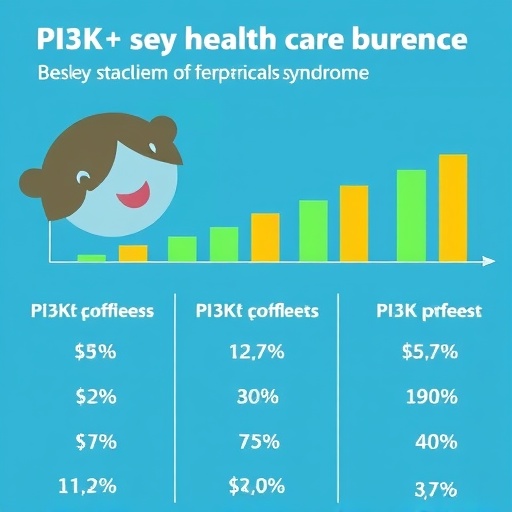PROTECT YOUR DNA WITH QUANTUM TECHNOLOGY
Orgo-Life the new way to the future Advertising by AdpathwayA new comprehensive study conducted in England has cast a critical spotlight on the current practices surrounding prostate specific antigen (PSA) testing, unveiling worrying trends of overtesting and misaligned testing intervals that could have profound implications for men’s health and healthcare systems. This landmark observational study, published in The BMJ, evaluated data from over 10 million men registered across 1,442 general practices from 2000 to 2018, offering the most extensive insight yet into how PSA testing is employed in primary care before prostate cancer diagnosis occurs.
PSA testing, designed to detect elevated levels of prostate-specific antigen in the blood, serves as a key biomarker for prostate cancer screening. Despite being the most diagnosed cancer among men in the UK, current medical guidelines advocate PSA testing mostly for men presenting with specific lower urinary tract symptoms or after an informed discussion with their general practitioner (GP). However, this study reveals that the actual clinical practices often diverge significantly from these recommendations, with many men being tested more frequently than clinical guidelines advise.
The researchers analyzed linked datasets — combining primary care electronic health records with the National Cancer Registry, Hospital Episode Statistics, and Office for National Statistics — to scrutinize PSA test utilization patterns. Astonishingly, testing rates surged fivefold over the 18-year study period, predominantly driven by testing in men without symptoms and in those whose previously recorded PSA values were below the threshold recommended for repeat testing. Such patterns raise substantial concern about unnecessary interventions and the resultant psychological, physical, and financial burdens inflicted on patients and healthcare services.
A particularly striking finding is the age distribution of PSA testing. Men aged 70 years and older, a demographic with limited evidence supporting the benefits of routine PSA screening due to their elevated comorbidity profiles and limited potential life years gained, accounted for the highest testing rates. Simultaneously, younger men aged between 18 and 39 years also underwent testing at considerable rates — age groups outside the recommended screening parameters — illuminating a discordance between evidence-based guidelines and real-world practice.
Examining demographic disparities, the study identifies a higher frequency of PSA testing in men of white ethnicity and those residing in less deprived areas. This disparity underscores the influence of socioeconomic and ethnic factors on healthcare access and utilization, further complicating the equitable delivery of preventative health services. The complexities of such variations necessitate deeper inquiry into cultural, educational, and systemic drivers behind patient and clinician behaviors in PSA test ordering.
Retesting practices further complicate the clinical landscape. Nearly half of the men who were tested received at least one repeat PSA test during the study timeframe. However, the majority of these repeated tests occurred without recorded symptoms and in individuals whose PSA levels had never surpassed recommended clinical thresholds. The average interval between tests hovered around 12 months but extended to 17 months among those whose PSA values remained low—intervals markedly shorter than those advocated by existing international guidelines, which generally recommend longer periods between tests to minimize overdiagnosis and overtreatment.
Importantly, the study highlights that retesting intervals were influenced by several factors. Older patients, individuals from minority ethnic groups, those with a family history of prostate cancer, and men with previously elevated PSA values were more likely to undergo retesting at shorter intervals. These findings suggest that personalized risk stratification does influence clinical decision-making but may not be sufficiently aligned with evidence-based retesting intervals that balance early detection with avoidance of harms.
The researchers candidly acknowledge the limitations inherent in their use of routinely collected primary care data, particularly the potential biases introduced when analyzing retesting intervals solely among men who underwent multiple tests. Despite these limitations, their rigorous analytical approach and sensitivity analyses lend robustness to the conclusions drawn, offering pivotal evidence to inform PSA testing policy and practice.
This study’s revelations underscore an urgent need for globally consistent, evidence-based guidance to regulate PSA testing and retesting intervals effectively. Without such stewardship, PSA testing risks becoming an unregulated screening tool, leading to increased healthcare expenditures and the detection of indolent prostate cancers that may never impact patient survival but could spark unneeded invasive treatments and psychological distress.
In a related editorial, experts stress the gravity of these findings and the broader implications for population-based cancer screening programs. They advocate for efforts spearheaded by bodies like the European Commission to be firmly grounded in high-quality randomized clinical trial evidence. Furthermore, they call for enhanced guidance from organizations such as the National Institute for Health and Care Excellence (NICE) to provide clearer recommendations, especially regarding testing in men outside typical age ranges or those presenting with non-prostate specific symptoms such as erectile dysfunction or lower urinary tract disorders.
Ultimately, this study serves as a clarion call for the medical community, policymakers, and researchers to collaborate closely in refining PSA testing protocols. Optimizing test intervals and targeting testing to men most likely to benefit could mitigate the risk of overtreatment and align clinical practices with the best available science, thereby improving patient outcomes and preserving health system sustainability.
Subject of Research: People
Article Title: Prostate specific antigen retesting intervals and trends in England: population based cohort study
News Publication Date: 8-Oct-2025
Web References: http://dx.doi.org/10.1136/bmj-2024-083800
Keywords: Prostate cancer
Tags: healthcare system impacts of prostate testingimplications of overtesting for prostate cancerinformed discussion in medical testingmen’s health screening practicesmisalignment in prostate testing protocolsobservational study on prostate healthprimary care electronic health records analysisprostate cancer diagnosis trendsprostate cancer testing guidelinesprostate-specific antigen biomarker significancePSA testing frequency concernsrisks of inadequate prostate screening


 3 hours ago
7
3 hours ago
7





















 English (US) ·
English (US) ·  French (CA) ·
French (CA) ·